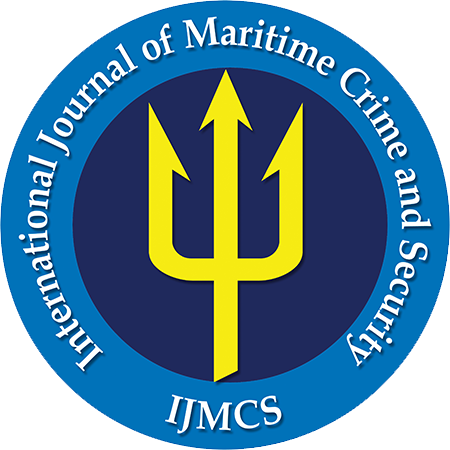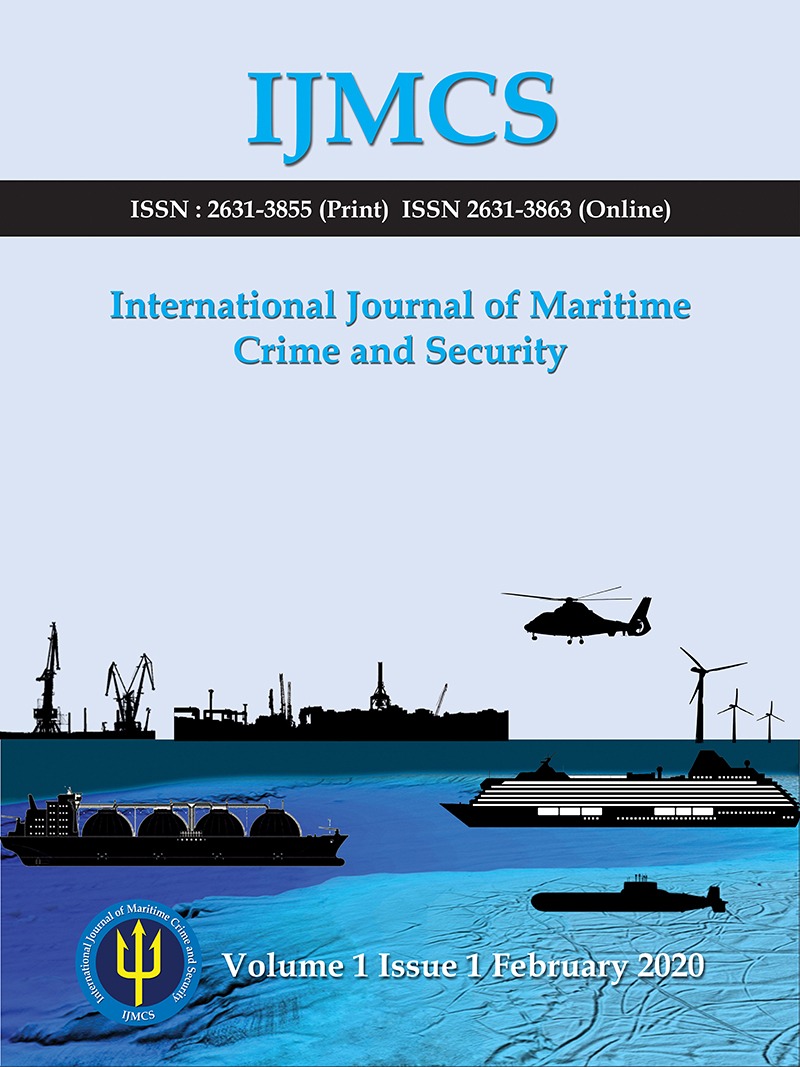Arctic, Antarctic, polar, opposites, maritime security
The frigid extremes of the planet are often ignored and largely misunderstood, even though they cover 11 million square miles (37.7 million square kilometres) and are often dismissed as uninhabitable, unimportant, frozen wastes that constitute the white margins at the edge of the map of the world. Their harsh environment and geographical isolation make them difficult to visit and challenging to live in. However, these two regions are so geographically different from each other, but play a fundamental role in the environmental balance of the globe’s climate. They are both strategically important and could act as geopolitical flashpoints. It is therefore crucial that we begin to look at these two areas from a more critical perspective, understand their pivotal importance to the future. The politics that surround these two areas are complex and fascinating, the economic value is significant, the social characteristics of the two regions are very different but equally important. As technology evolves mastering these two areas will alter, which will throw up a range of legal and environmental hurdles. The Arctic and Antarctic are both maritime domains and managing the maritime security concerns will be considerable. This article is designed to describe some of the aspects of the polar regions, provide some background and prompt discussion. These regions are destined to be more important to our future than most of have imagined.
Download Full Text Here
- https://en.wikipedia.org/wiki/Earth%27s_magnetic_field
- 365° divided by 24 equals 15°.
- These average temperatures are very conservative, as the poles represent around 20% of the earth’s surface, and temperatures vary significantly across both regions, where the lowest and highest temperatures far exceed the medians.
- The Ozone layer of gas (O3) in the atmosphere of the planet absorbs 97-99 percent of the sun’s harmful medium frequency ultraviolet light.
- Permafrost is soil or water that is continuously frozen for more than two years. Some land has been frozen for over 700,000 years and some permafrost is as deep as 1,500m.
- Calf/Calving: process by which ice breaks off a glacier's terminus; usually the term is reserved for tidewater glaciers or glaciers that end in lakes, but it can refer to ice that falls from hanging glaciers. https://nsidc.org/learn/cryosphere-glossary
- Significant floating ice definitions, Iceberg: a piece of ice that has broken off from the end of a glacier that terminates in water. Bergy Bit: large chunk of glacier ice (a very small iceberg) floating in the sea; bergy bits are usually less than 5 meters (15 feet) in size and are generally spawned from disintegrating icebergs. Growler an iceberg less than 2 meters (6.6 feet) across that floats with less than 1 meter (3.3 feet) showing above water; smaller than a bergy bit. Brash Ice: accumulation of floating ice made up of fragments not more than 2 meters (6.6 feet) across, the wreckage of other forms of ice. https://nsidc.org/learn/cryosphere-glossary
- National Geographic, Ocean: An illustrated Atlas, 2008
- A23a: Tracking the world’s biggest iceberg as it drifts towards oblivion https://www.bbc.co.uk/news/resources/idt-f4de435a-d215-4a7c-86e9-9b838701c993
- https://yaleclimateconnections.org/2022/02/what-the-latest-science-says-about-antarctica-and-sea-level-rise/
- The Arctic, Klaus Dodds & Jamie Woodward, 2021
- Geographical miles are the same distance as nautical miles 2,000 yards/,
- Peary’s party comprised six men, including Matthew Hanson and four Inuit men, Ootah, Seeglo, Egingwah and Ooqueah.
- The Worst Journey in the World, Apsley Cherry-Garrard, 1922, p327
- Ibid Scott’s route
- The Lives of Nansen and Amundsen, Hans Olav Thyvold , 2018, p150
- The Arctic Ocean is the smallest ocean covering 8.7 million square kilometres.
- Kowalik, Z. & Proshutinsky, A. Y. The Arctic Ocean Tides. The Polar Oceans and Their Role in Shaping the Global Environment 1, 137–158 (American Geophysical Union (AGU), 1994).
- National Geographic Ocean Illustrated Atlas p254
- Baleen plates have replaced teeth in Mysticises whales, they are stiff and act as a sieve, allowing whales to take vast volumes of water and small plankton into their enormous mouths, the water is then pushed out but the small creatures, captured by the Baleen plates remain and are consumed.
- The 1996 Ottawa Declaration saw the formation of the Arctic Council. The Council includes the Arctic states of Canada, Denmark, Finland, Iceland, Norway, Russia, Sweden, and America. The Arctic Council was designed to increase cooperation, coordination, and diplomacy among the Arctic States with the involvement of indigenous communities and other Arctic inhabitants. The Arctic Council has performed studies on climate change’s effects in the Arctic.
- https://arctic-council.org/about/states/
- Bernaerts’ Guide to the 1982 United Nations Convention of the Law of the Sea p112
- Ibid
- Ibid
- Ibid Art 56, p170
- Ibid Art 59 p171
- National Geographic, The New Cold War Sep 2019
- World’s Most Capable Icebreakers: Russia’s New Arktika Class - https://www.usni.org/magazines/proceedings/2022/may/worlds-most-capable-icebreakers-russias-new-arktika-class
- USCG Polar Star, the US Icebreaker was commissioned in 1974.
- WSW – West by Southwest,
- Capt James Cook, The Journals Monday 18th January 1773, 65° 52’S, 39° 35’E
- The Antarctic, Klaus Dodds p57
- Ibid
- Shipping in Arctic Waters, Østreng, Jørgensen-Dahl, Wergelend, Eger, Lothe, Fløistad, Mejlænder-Larsen, 2013, pxxiv
- Ibid
- Ibid
- Authors italics.
- VN Leskin and BN Porfiriev, “The Russian Arctic: The logic and paradoxes of change,” Stud. Russ. Econ. Dev. 30, 594-605 (2019)
- Transport Infrastructure of the Russian Arctic: Specific Features and Development Prospects, Serova and Serova 2020, Luzin Institute for Economic Studies, Federal Research Centre of Kola Science Centre, Russian Academy of Sciences
- https://www.imo.org/en/OurWork/Safety/Pages/polar-code.aspx
- Both Suez Canal and Panama Canal charge ships transiting the canals for their use.
- Marine Insurance comprises; Hull & Machinery which covers the material aspects of the vessel; Protection and Indemnity (P&I) covers ship owners, charterers against third party liability linked to the operation of the ship; Cargo insurance for the cargo.
- https://chnl.no/news/main-results-of-nsr-transit-navigation-in-2024/
- Rosatom, the Russian State Atomic Energy Corporation reported a figure of 3.08 tons of cargo transiting the NSR during the year.
- Ibid
- Ibid
- Shipping in Arctic Waters, Østreng, Jørgensen-Dahl, Wergelend, Eger, Lothe, Fløistad, Mejlænder-Larsen, 2013, p142
- Cruise Lines International Association (CLIA) State of the Cruise Industry Report April 2024
- Ibid
- https://www.aeco.no/
- https://iaato.org/
- The global population in 1950 was around 2.6 billion, by 2050, the global population is estimated to be around 9 billion, a 350% increase.
- https://www.arcticcentre.org/EN/arcticregion/Arctic-Indigenous-Peoples
- https://arctic-council.org/about/permanent-participants/
- Antarctic Convergence is a hydrological boundary that separates the northward flowing cold Antarctic waters from the warmer waters of the great oceans. The Antarctic waters normally sink below the warmer waters but where there are upwellings of cold Antarctic waters rich in Krill and are very high in marine productivity. The line is dynamic that fluctuates by up to 0.5 of a degree of latitude. As the Arctic is surrounded by land is does not have a maritime convergence line but it does have a terrestrial tree line marking a climatic zone.
- In accordance with IAATO, only 100 people are allowed to step ashore at any one location at a time, meaning that many of the larger cruise ship passengers only view the environment from the ship.
- Many of the early Antarctic expeditions including Amundsen, Mawson, Scott and Shackleton included the dogs as part of their rations as the loads on the sledges required less animals to pull the loads.
- Many quantum computing technologies operate at 0.1Kelvin/-273°C
- As most communication satellites orbit above the populated areas of the planet, the space above the poles is less cluttered, therefore a satellite in a polar orbit would have less lunar traffic to deal with.
- The temperature in outer space is generally 2.73 Kelvin (-270.42°C/-454.75°F) https://www.scienceabc.com/nature/universe/what-is-the-temperature-of-space
- USA is not a signatory of UNCLOS.
- https://arctic-council.org/explore/work/cooperation/
- Aleut International Association (AIA), Arctic Athabaskan Council (AAC), Gwichín Council International (GCI), Inuit Circumpolar Council (ICC), Russian Association of Indigenous Peoples of the North (RAIPON), Saami Council
- https://arctic-council.org/about/permanent-participants/
- https://arctic-council.org/explore/work/cooperation/
- https://www.ats.aq/index_e.html
- Argentina, Australia, Belgium, Chile, France, New Zealand, Norway, Poland, USSR (Russia), South Africa, UK and USA.
- LawTeacher. November 2013. Antarctic Treaty System: Strengths and Weaknesses. [online]. Available from: https://www.lawteacher.net/free-law-essays/international-law/antarctic-treaty-system-8363.php?vref=1 [Accessed 22 August 2024].
- Convention of Antarctic Flora and Fauna (1964), Convention for the Conservation of Antarctic Seals (1972), Convention for the conservation of Antarctic Marine Living Resources (1982), Convention on the Regulation of Antarctic Mineral Resources Activities (1988), Protocol on Environmental Protection to the Antarctic Treaty (1991).
- As an example since 1963, Australia has undertaken just 10 inspections of facilities in Antarctica, mostly coastal stations and just one of the inland seasonal Station Taishan, run by China in 2019/20. However, no party has ever inspected the inland Chinese station Kunlun on Dome Argus. Ice Panda: Navigating China’s hybrid Antarctic Agenda, Dr Elizabeth Buchanan, ASPI, August 2024
- LawTeacher. November 2013. Antarctic Treaty System: Strengths and Weaknesses. [online]. Available from: https://www.lawteacher.net/free-law-essays/international-law/antarctic-treaty-system-8363.php?vref=1 [Accessed 22 August 2024].
- https://www.ipcc.ch/srocc/
- https://www.theuncertaintyproject.org/tools/rumsfeld-matrix
- The Anarchic Sea, Dave Sloggett, p37
- In a survey conducted by two international shipping associations, BIMCO and the International Chamber of Shipping in 2015 they identified the top seafarer supplying nations, all of which use the same word for “safety” and “security”: including China 安全 (Ānquán), Philippines “seguridad” (Spanish), Russian “безопасность”, and India “सुरक्षा”. The two largest ship owning countries also use the same word for “safety” and “security”: Greece – ασφάλεια (asfaleia) and China.
- Oxford English Dictionary
- Oxford English Dictionary
- These ports and airfields are in various states of serviceability but there are aspirations, with Chinese financial support, to reinvigorate the network.
- Artic policies and strategies for Arctic States, Indigenous Peoples and non-Arctic States are listed at https://arcticportal.org/arctic-governance/arctic-policies-database
- National Geographic September 2019.
- Ibid
- Ibid
- The concept of transhipment ports is they act as hub ports for ships to visit to exchange containers. In this case, the delivery of laden containers from China, by specialist ice strengthened ships using the NEP and the collection of containers with European products and/or empty boxes.
- United Nations Conference on Trade and development Maritime Transport Review 2024, p38
- The “coolest” place for astronomy, Chinese Embassy, Canberra website
- Ice Panda: Navigating China’s hybrid Antarctic Agenda, Dr Elizabeth Buchanan, ASPI, August 2024
- Ibid
- https://www.seashepherd.org.au/our-campaigns/antarctica-defense/
- Arctic Council and Antarctic Treaty.
- https://iwc.int/management-and-conservation/whaling/commercial
- https://iwc.int/table_objection
- Paul Watson: Sea Shepherd eco-warrior fighting to stop whaling and seal hunts. The Telegraph 17 Apr 09.
- https://www.seashepherd.org.au/who-we-are/our-mission/



